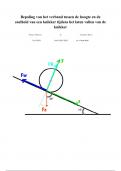Exam (elaborations)
MAC2601 STUDY NOTES.
- Institution
- University Of South Africa
MAC2601 STUDY NOTES. Study Guide One Part 1 : Valuing inventories using basic techniques Topic 1 : Nature and behaviour of costs Study Unit 1 : Cost objects, classification and behaviour Cost objects and traceability : Cost object: is any activity, unit or phenomenon for which cost ca...
[Show more]





